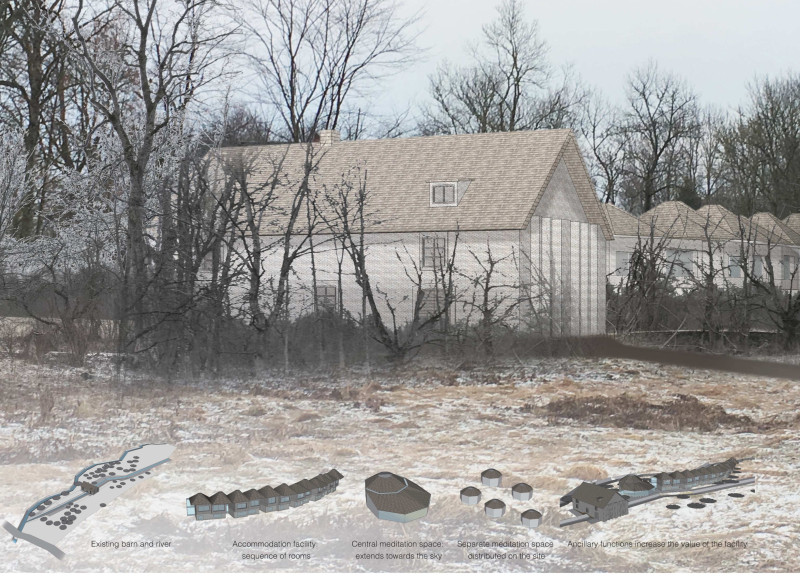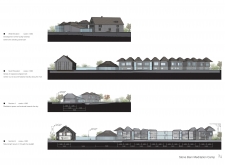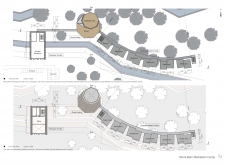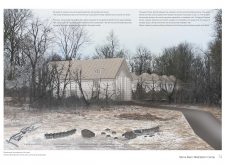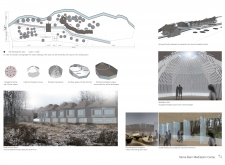5 key facts about this project
At the heart of this project is a commitment to sustainability and community engagement. The design incorporates eco-friendly materials and practices aimed at minimizing the environmental footprint. Key materials utilized in the construction include reinforced concrete, glass, wood, and metal, each selected for their durability, aesthetic properties, and performance characteristics. The combination of these materials not only enhances the building's structural integrity but also contributes to a cohesive visual language that resonates within the local architectural vernacular.
One of the standout features of the project is its open-plan layout, which facilitates natural light and airflow throughout the space. Large, strategically placed windows not only provide expansive views of the surrounding landscape but also encourage a seamless indoor-outdoor relationship, enhancing the occupants' connection to nature. The integration of green roofs and vertical gardens further emphasizes this intent, promoting biodiversity and improving the microclimate.
The architectural design embraces a minimalist aesthetic, prioritizing functionality without compromising on elegance. Simple yet sophisticated lines define the structure, allowing for a sense of tranquility and focus. The thoughtful detailing of architectural elements, such as the smooth transitions between indoor and outdoor spaces and the careful selection of textures, underscores the project's commitment to craftsmanship and quality.
In terms of functionality, the layout is designed with flexibility in mind, accommodating a variety of activities and events. This adaptability is crucial for fostering community interaction and encouraging social gatherings, while also allowing spaces to evolve based on the changing needs of the users over time. Each designated area within the building is intended to promote collaboration, creativity, and personal reflection, fulfilling both individual and communal aspirations.
Unique to this project is its response to climatic considerations. The architectural design incorporates passive strategies that optimize energy efficiency, such as strategically oriented roof overhangs that provide shade in warmer months while allowing sun penetration during winter, promoting thermal comfort year-round. The use of natural ventilation strategies further enhances sustainability, reducing reliance on mechanical systems and fostering a healthier indoor environment.
Moreover, the project embraces local culture and heritage through material choices and motifs, incorporating traditional elements that pay homage to the surrounding context. This design approach not only roots the building in its location but also enhances its sense of place, making it a respected and cherished addition to the community.
For those interested in exploring this architectural endeavor further, reviewing the architectural plans, sections, and various design iterations will yield deeper insights into the project's thoughtful organization and spatial dynamics. Each detail reflects a comprehensive understanding of both modern and traditional architectural principles, making the project an engaging case study for anyone interested in contemporary architecture and design. This project stands as a testament to the potential of architecture to shape environments and enrich lives through carefully considered design.


